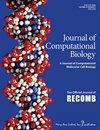在基因树上生成异构数据。
IF 1.4
4区 生物学
Q4 BIOCHEMICAL RESEARCH METHODS
Journal of Computational Biology
Pub Date : 2025-06-01
Epub Date: 2025-05-09
DOI:10.1089/cmb.2024.0843
引用次数: 0
摘要
我们介绍了GenPhylo,一个Python模块,沿着系统发育模拟核苷酸序列数据,避免了连续时间马尔可夫过程的限制。GenPhylo直接使用一般的马尔可夫模型,因此自然地包含了跨谱系的异质性。我们通过提供一种可以纳入其他仿真软件的算法,解决了使用预先给定的期望替换数(分支长度信息)生成转移矩阵的挑战。本文章由计算机程序翻译,如有差异,请以英文原文为准。
Generating Heterogeneous Data on Gene Trees.
We introduce GenPhylo, a Python module that simulates nucleotide sequence data along a phylogeny avoiding the restriction of continuous-time Markov processes. GenPhylo uses directly a general Markov model and therefore naturally incorporates heterogeneity across lineages. We solve the challenge of generating transition matrices with a pre-given expected number of substitutions (the branch length information) by providing an algorithm that can be incorporated in other simulation software.
求助全文
通过发布文献求助,成功后即可免费获取论文全文。
去求助
来源期刊

Journal of Computational Biology
生物-计算机:跨学科应用
CiteScore
3.60
自引率
5.90%
发文量
113
审稿时长
6-12 weeks
期刊介绍:
Journal of Computational Biology is the leading peer-reviewed journal in computational biology and bioinformatics, publishing in-depth statistical, mathematical, and computational analysis of methods, as well as their practical impact. Available only online, this is an essential journal for scientists and students who want to keep abreast of developments in bioinformatics.
Journal of Computational Biology coverage includes:
-Genomics
-Mathematical modeling and simulation
-Distributed and parallel biological computing
-Designing biological databases
-Pattern matching and pattern detection
-Linking disparate databases and data
-New tools for computational biology
-Relational and object-oriented database technology for bioinformatics
-Biological expert system design and use
-Reasoning by analogy, hypothesis formation, and testing by machine
-Management of biological databases
 求助内容:
求助内容: 应助结果提醒方式:
应助结果提醒方式:


